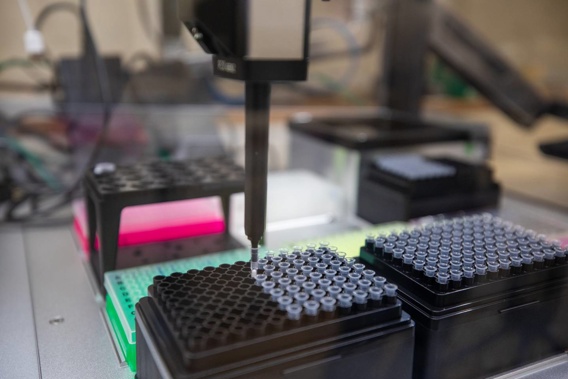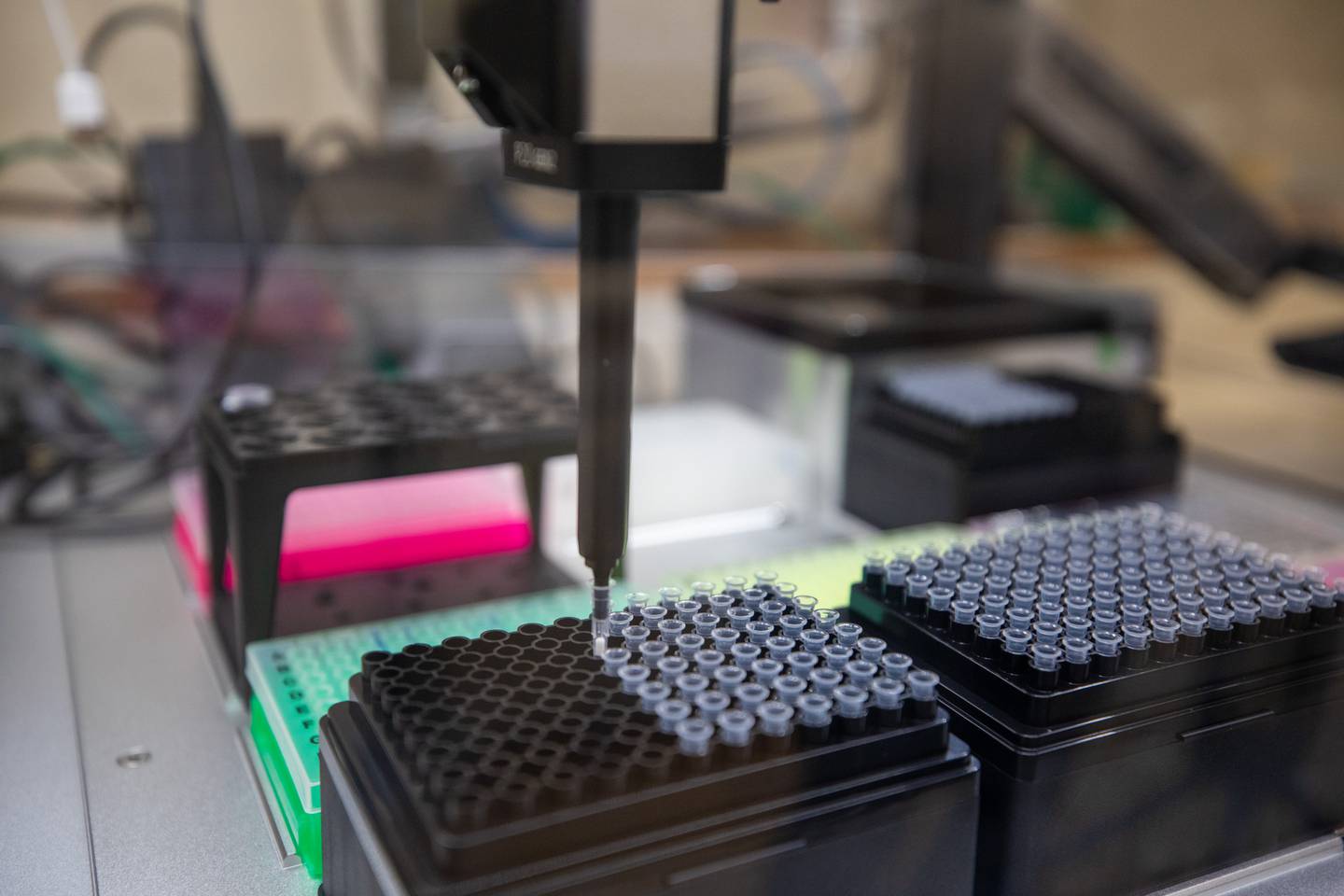
The Omicron wave is stripping away one of New Zealand's trustiest test tools, as labs are forced to move away from batch-processing of samples.
But scientists hope that a PCR testing bottleneck on labs from the loss of time-saving "pooled sampling" will be offset as more Kiwis self-diagnose using rapid antigen tests.
In pooled sampling, up to 10 test samples of suspected potential negative cases are grouped together for diagnosis.
If a pool tested positive, scientists then go through each individual sample to weed out the case.

The Omicron wave is stripping away one of New Zealand's trustiest test tools, as labs are forced to move away from batch-processing of samples. Photo / Dom Thomas/RNZ
This allowed labs to quickly churn through test samples - even at the peak of the Delta outbreak, when the percentage of positive cases to samples tested was just one to two per cent.
But the approach was quickly becoming impractical as New Zealand's test positivity rate neared 5 per cent – a threshold the World Health Organisation used as a benchmark to indicate a widespread outbreak.
While some pooling was still being carried out around the country, a Ministry of Health spokesperson said labs had now largely reverted to single sample diagnostic tests.
Earlier this week, director general of health Dr Ashley Bloomfield said the seven-day testing average was sitting at around 22,000 or 23,000 per day.
Bloomfield said daily PCR test capacity could be surged up to 60,000 to 70,000 – but also noted that, in the outbreak's centre of Auckland, the present capacity was only 20,000.
Even with local positivity rates of 3 to 5 per cent, Auckland labs weren't able to pool samples, which reduced capacity.
Without being able to pool samples, Bloomfield said national capacity would be around 30,000 samples per day.
It wasn't clear what extra impact a just-announced strike of 10,000 DHB staff – laboratory workers among them – would have.
But moving to more single-sample testing would certainly mean less capacity to process tests.
"At this stage, a mix of small batch pooling and single sample testing is the most efficient use of testing resources," a ministry spokesperson said.
In the face of fast-rising case numbers, the ministry, DHBs and lab providers were taking steps to improve testing efficiency.
That included boosting the country's PCR test processing capacity – but also supplementing PCR tests with RATs, with a focus on critical workers and "priority populations".
"There are now more than seven million RATs in stock available for use in New Zealand, three million of which have already been distributed around the country," the spokesperson said.
"The use of RATS will free up additional PCR test capacity across the system for those most in need of this test."
Institute of Medical Laboratory Science president Terry Taylor said that, when Omicron began spreading more widely, the elimination mindset of "test, test, test" would become less relevant.
Already in Auckland, where stations have been swamped, health officials have had to refocus testing on priority needs.
That meant people only needed to get tested if they had symptoms; felt unwell; had received a positive RAT test; were a close contact; worked with Covid-19 patients; were required to have a test; or were attending a hospital procedure or appointment and had been asked to get one.
Taylor hoped that RATs, as well as looped mediated isothermal amplification (LAMP), would ease pressure on labs as they shifted from providing surveillance to a straight diagnostic role.
"Our labs perform more than 200,000 other diagnostic tests in an average day, and this service provision needs to be protected so our hospital clinical services and treatment pathways for non-Covid patients can continue."
Still, he said there was still the potential for diagnostic labs to be "overrun", as had happened in Australia and overseas.
"The work of our clinical and laboratory staff will be essential in prioritising provision of our core services and how to manage our way through this outbreak."
Bottlenecks during busy periods could delay PCR results by three days if things escalated quickly, he said.
"It is fair to say the diagnostic laboratory response in Aotearoa New Zealand over the past two years has been one of the shining lights of the pandemic response to date," he said.
"But, we are very tired and stressed and are facing an enemy that has the ability to change its camouflage and move in ways we have not seen before."
In response to October's expert review of testing, the Government last month announced it would be increasing PCR capacity from the current maximum of 39,000 tests a day, to a new baseline of 58,000 tests and surge capacity of 77,600 tests.
Using robots to take caps off specimens, or other technology, was being used in more labs to free up staff, while RATs had also been expanded for use in certain situations with twice as many test types.
Take your Radio, Podcasts and Music with you









